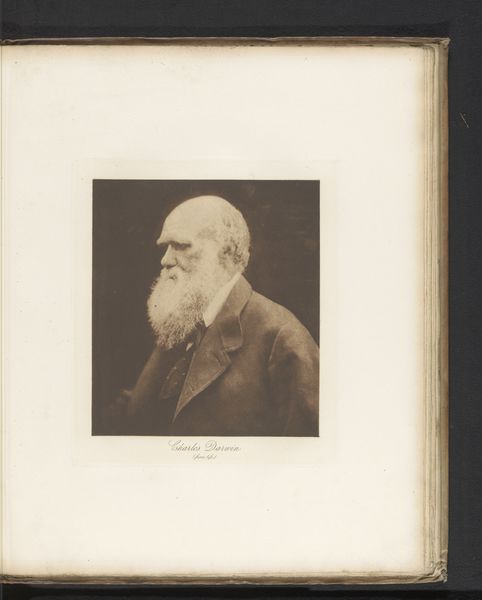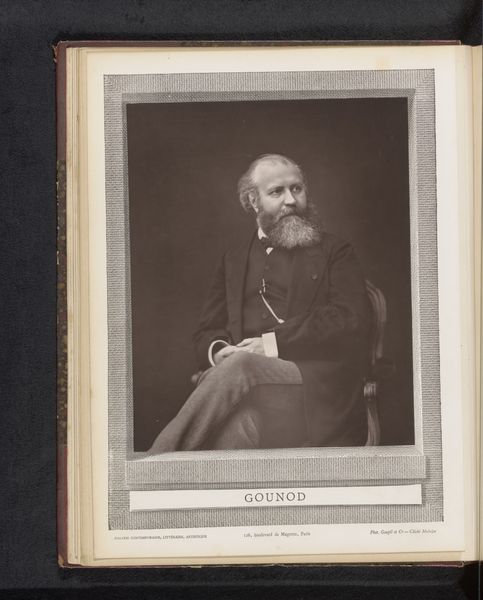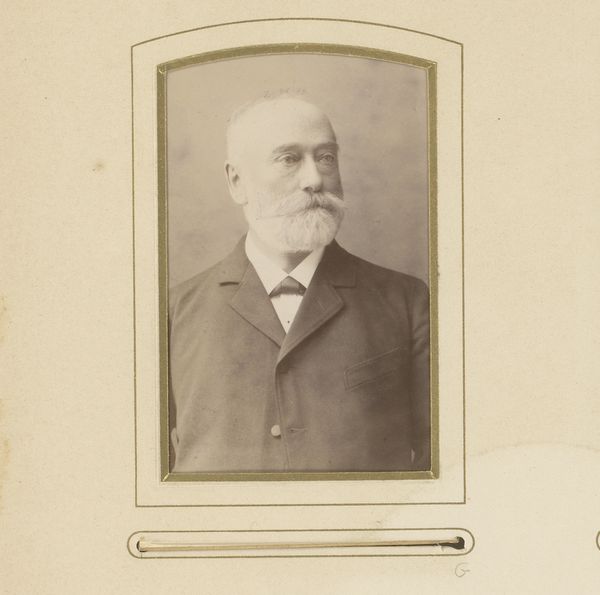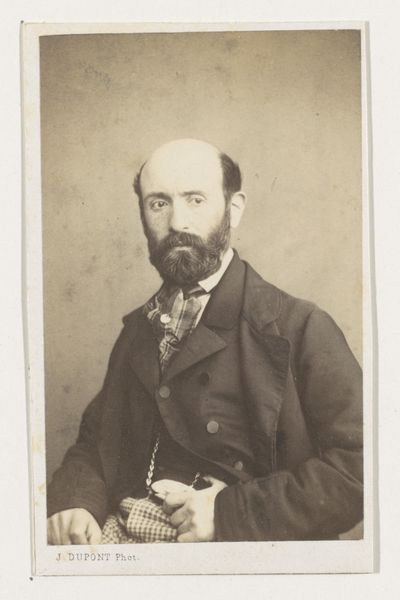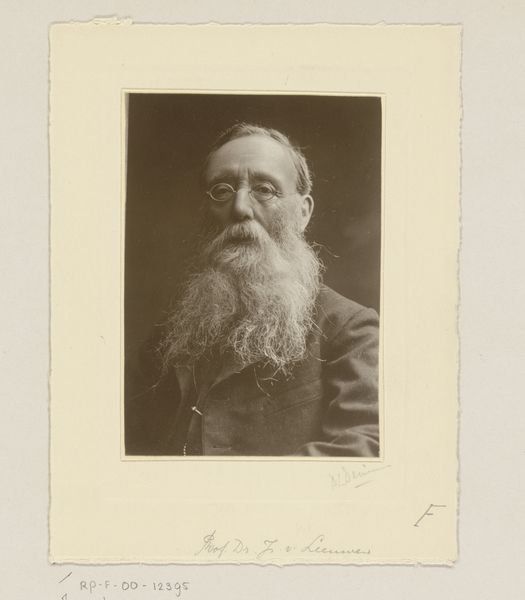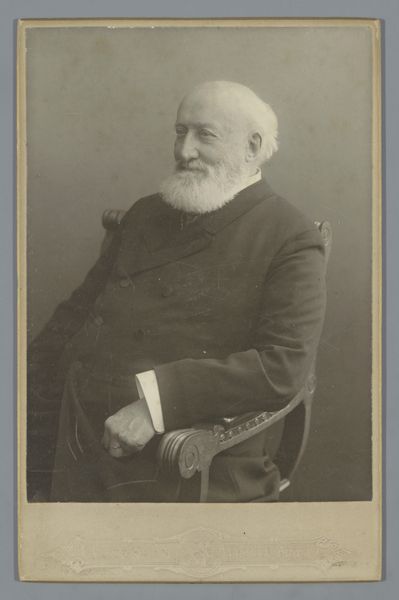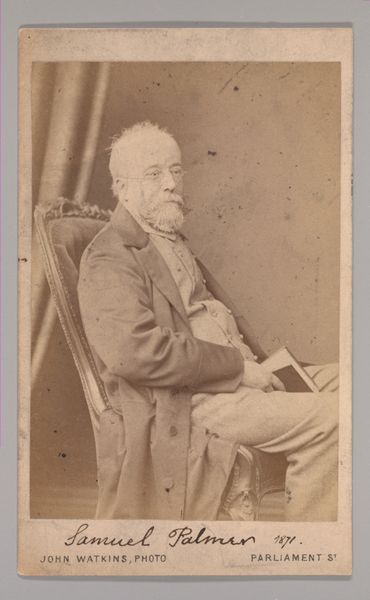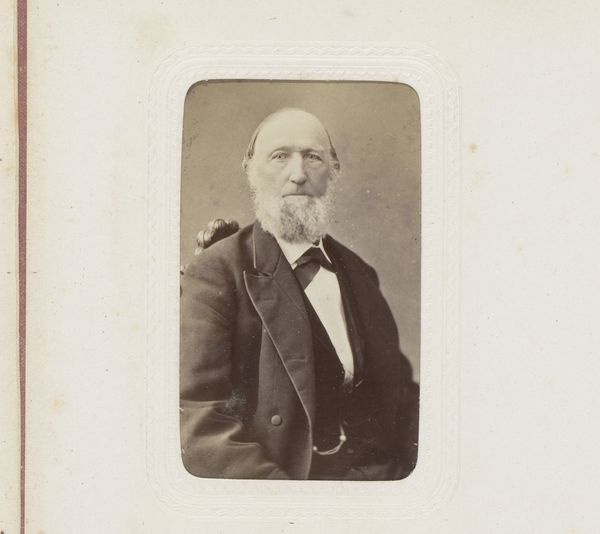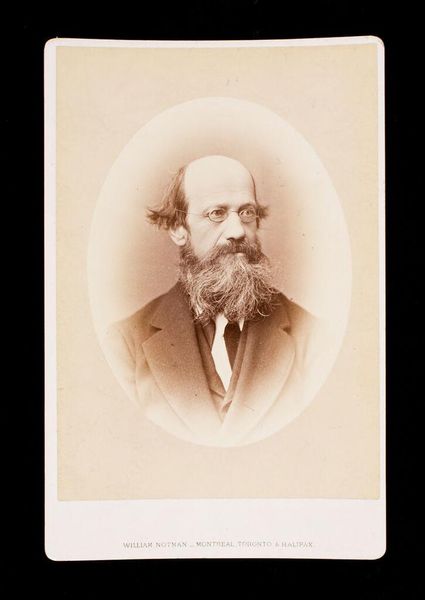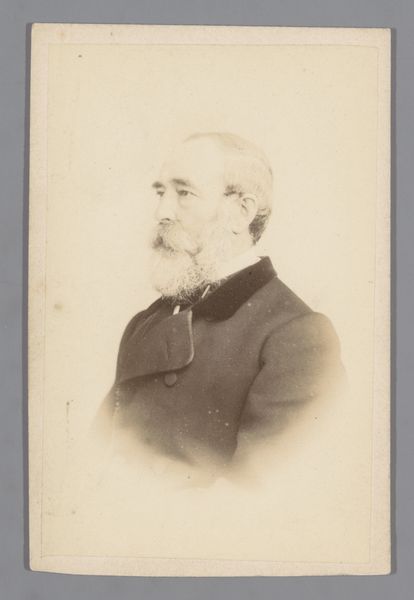
photography
#
portrait
#
photography
#
realism
Dimensions: height 93 mm, width 65 mm
Copyright: Rijks Museum: Open Domain
Editor: We’re looking at a photograph from 1880, "Portret van Gustave Nadaud." It’s an intriguing portrait, but there’s a formality and almost… restriction to it that I find compelling. What do you see in this piece? Curator: Beyond the sitter's immediate presence, I see a carefully constructed performance of bourgeois masculinity. How does the photographic medium itself reinforce these social codes, right? Think about the control inherent in posing, the carefully selected clothing, even the somewhat austere backdrop. All speak to a desire to project a specific image of power and respectability, prevalent especially at a time when photography was beginning to democratize image-making, allowing different communities to become visible and reclaim their narrative. Editor: So, it’s not just a record but also an active statement? I hadn’t considered that performance aspect so directly. Curator: Precisely! Consider the social context: the rise of the bourgeoisie, their self-fashioning, and the societal pressures that informed their identity. Nadaud’s portrait, then, participates in and perhaps even subtly critiques that constructed ideal. Can a portrait also unintentionally reveal tensions beneath that controlled surface? Does this portrait humanize or monumentalize its subject? Editor: That adds a layer of complexity. I was so focused on the simple aesthetics that I missed the sociopolitical implications embedded within the image. Curator: It’s about interrogating what appears natural or neutral. What are the historical power dynamics influencing our perceptions and representations of each other? This image, seemingly simple, provides rich ground for that critical reflection. Editor: I will never look at an old photograph in the same way again! It makes me question what these people intended to portray to future generations. Curator: Exactly. The key is that, rather than taking them at face value, we need to constantly be mindful of the sociohistorical and cultural contexts that affect all images.
Comments
No comments
Be the first to comment and join the conversation on the ultimate creative platform.
